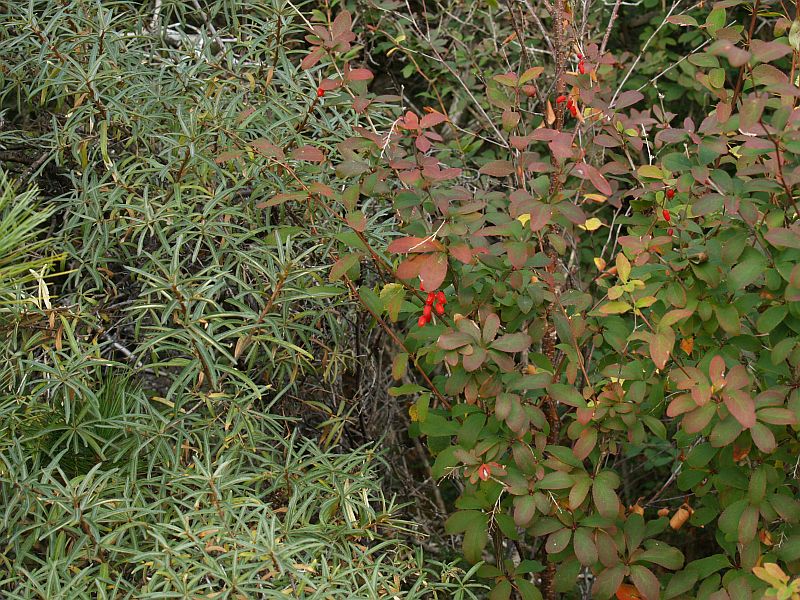A small flock of Waxwings (sidensvans) finally arrived at the end of November and have been foraging in the garden since (rowans / rogn failed this year). In these videos, they are eating apples, elderberry and guelder rose berries (epler, svarthyll and krossved). I’ve heard tawny owl (kattugle) calling in the garden regularly recently too and the last video is a recording of one calling.
Tag Archives: Waxwing
Natural bird food is best
I garden for the birds and other wildlife as well as myself and believe that bought bird food (sunflower seeds) is not necessarily a good thing as it’s imported and largely grown inorganically to the detrement of birds and other wildlife in the country of origin. My observations are that most bird species in our area prefer natural food (including grain in local fields) and several species never or seldom come to bird feeders. Others such as blackcap (munk) are reliant to a large extent on garden berries and fruit.
For these reasons, I put out purchased birdfood including homegrown grain and apples only when the whether is severe. Even here in the north where we have largely had subzero temperatures day and night since November, most birds seem to be finding plentiful natural food this winter. Today, greenfinches (grønnfink) and bramblings (bjørkefink) were feeding on rowan (rogn) berries, I noticed a blue tit (blåmeis) eating nettle seed, waxwings (sidensvans) were taking guelder rose (krossved), hawthorn (hagtorn) and rowan berries (films below), a blackcap was spotted eating one of the last apples still hanging on a tree, fieldfares (gråtrost) were eating hawthorn berries and, for only the second time I noticed goldfinches feeding on chicory (sikkori) seed before switching back to burdock (borre) seed. I grow both burdock and chicory for food and a bi-product of seed saving is that the birds get a share. There are also flocks of siskins (grønnsisik), crossbills (korsnebber) and pine grosbeaks (konglebit) feeding on spruce and pine seed, often in large flocks. Every evening there are maybe a thousand crows (hooded crows / kråke and jackdaws / kaie) that fly into the roost at Vikhammer, still finding grain during our short day in the snow-covered fields. There’s also a local flock of over 90 Canada Geese (Kanadagås) that are overwintering and still able to forage in the fields. There are thousands of wildfowl also on the fjord and I today noted a flock of 250 mallard (stokkand) duck resting in the bay below the house.
Bird feeders can also have negative impact on birds as disease can spread rapidly, such as salmonellosis in greenfinch and house sparrow.
Growing plants in our gardens to supply a greater proportion of winter food for our birds is something many of us can do, but it does mean leaving seed heads to deadhead until spring and encouraging wild plants such as nettles which have multiple uses for us and wildlife. It’s also not as easy as buying a bag of bird seed from the supermarket. Bird friendly plants can be planted in good view of the house. For example, I have a yew tree right next to my kitchen window which allows me to observe berry-eating species such as blackcap, waxwing, robin, fieldfare, redwing and blackbird to within 1m!
I think we should also consider delaying putting out commercial bird food until weather really is severe.
1. Waxwings in slow motion – notice what happens with the rowan berry in the second sequence in the first video:
2. Only the second time I’ve seen goldfinches on chicory:
3. Waxwings on guelder rose berries with bramblings
Lemon Berberis
Norwegian: for en norsk oversettelse av denne artikkelen (Norwegian translation), se KVANNs (Norwegian Seed Savers) Nyhetsbrev #15
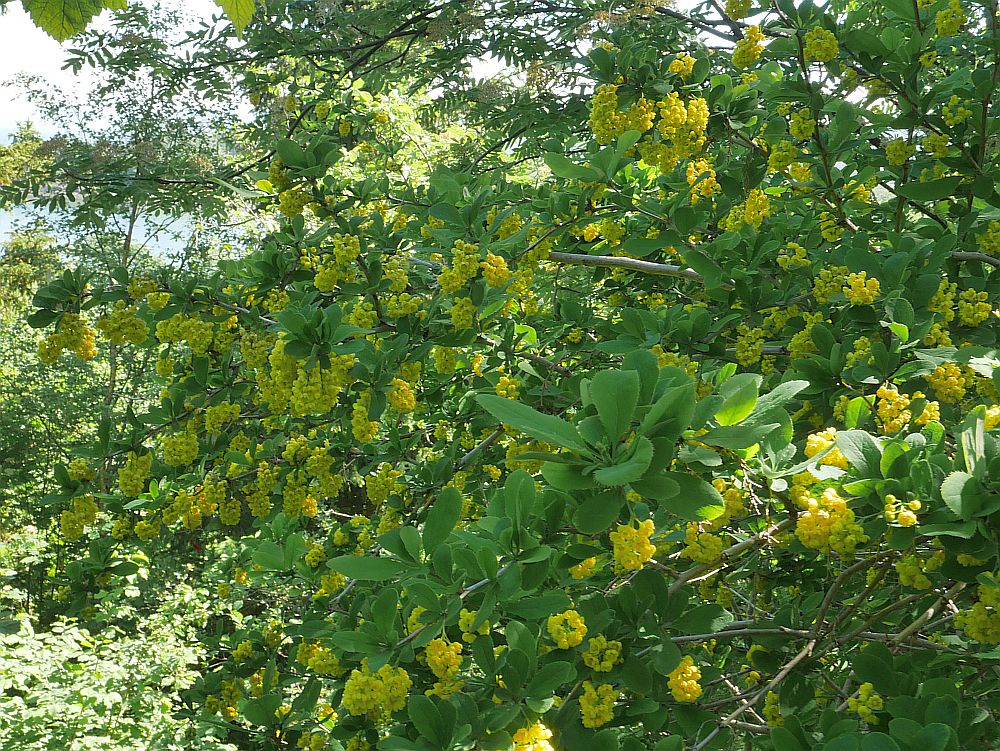
There’s always been a barberry (Berberis vulgaris) in my garden, in dry soil in the root zone of my largest spruce trees. It was a large plant when we moved here in 1984 and may be wild as it’s a common plant on the other side of the bay (Malvikbukta) where it grows on shallow dry soils next to the fjord in company with sea buckthorn (Hippophae tamnoides). It is thought that this species was originally introduced in monastery gardens and later naturalised. It’s nowadays a relatively common but local plant along the Trondheimsfjord, but isn’t found much further north.
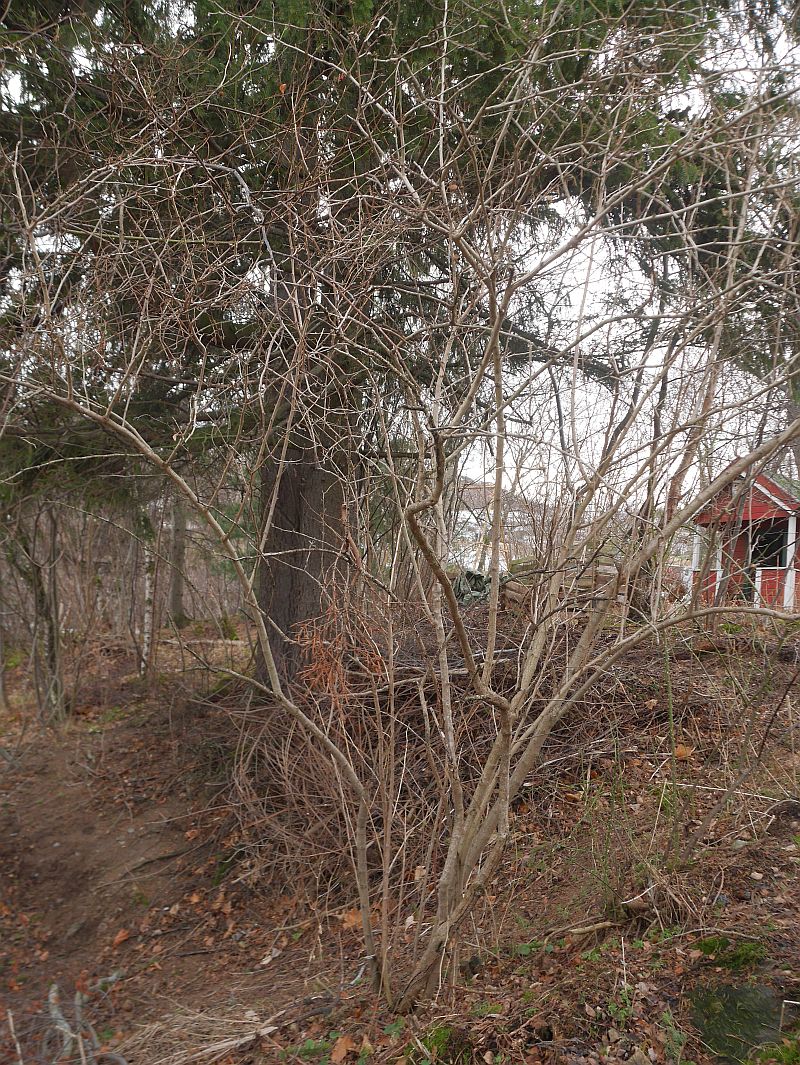
I also planted one next to the kitchen window in order to get good views of waxwings (sidensvans) and thrushes (troster) that feast on the berries in autumn and winter:

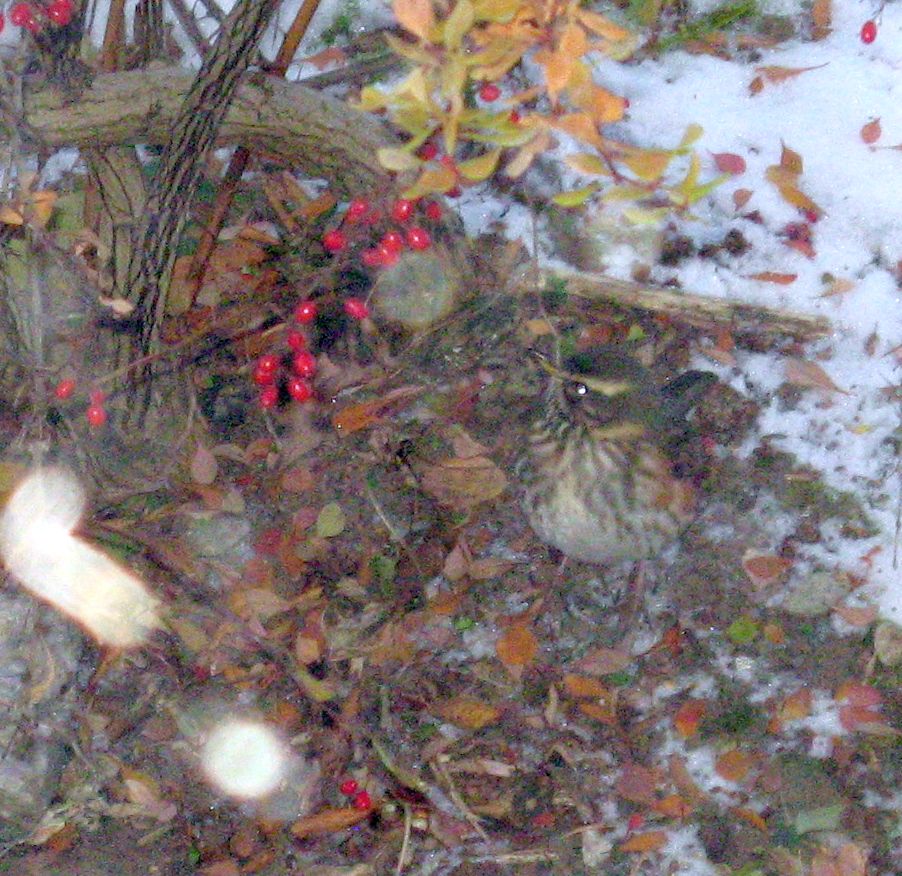
I also have a form with dark berries which I propagated by seed which I received in 1998:
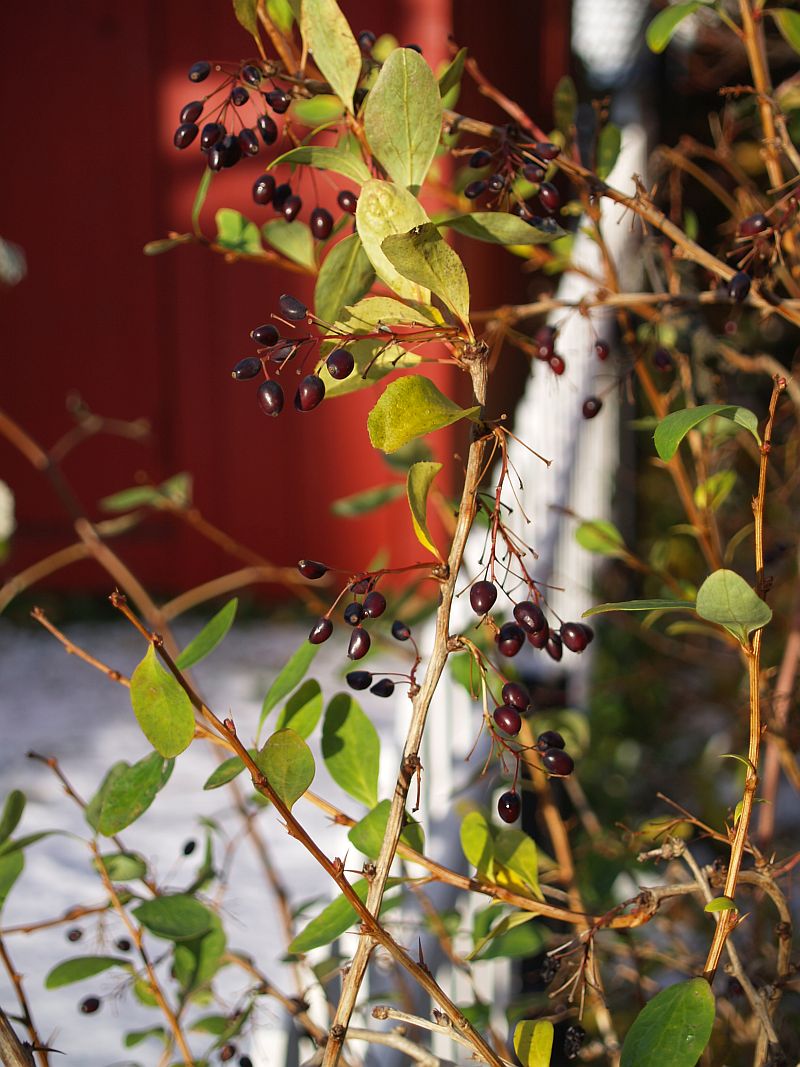
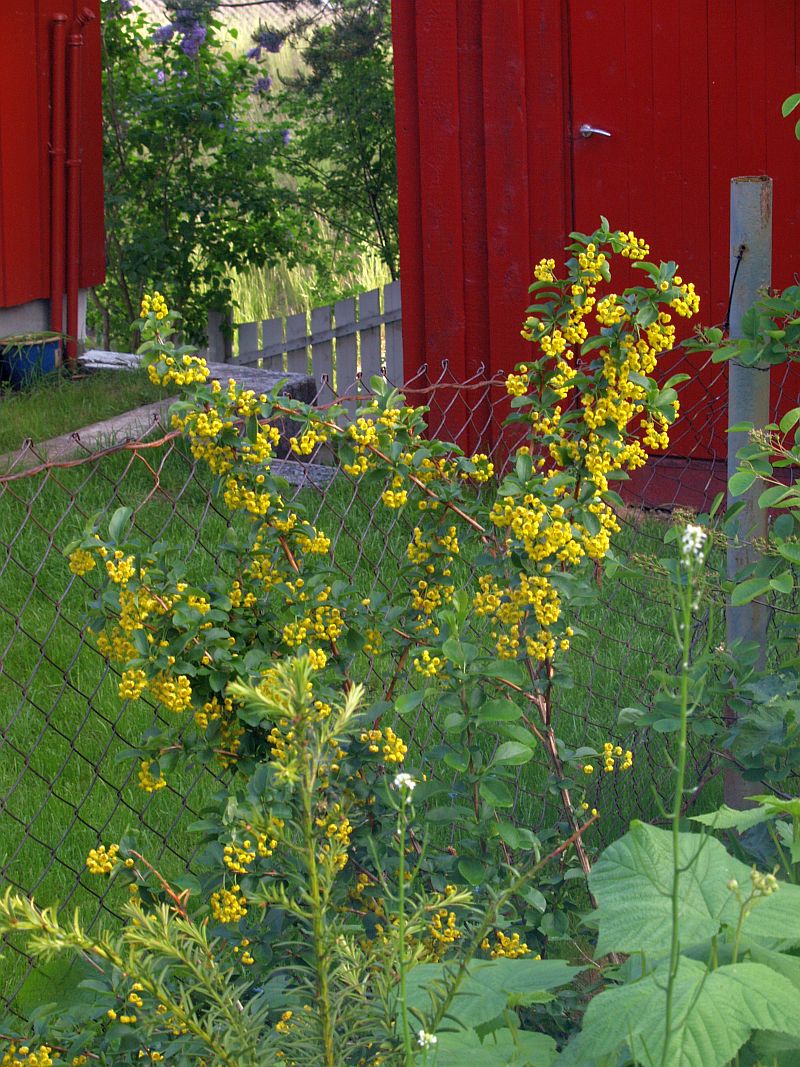
Ethnobotany
There are many species of Berberis, and the closely related Mahonia, which many botanists consider to be a part of Berberis, that have been used traditionally for food around the world. In South America, several species were used including the fruit of the michay (Berberis microphylla) used by the Mapuche people of Chile and Argentina. Numerous Native American tribes used various Mahonia species both fresh and dried, for jelly and jam, tea, wine and lemonade. In Japan, several species are used for drinks and at least one species is used for a drink in China. 7 species are known to be used in Nepal, both eaten fresh, pickled, distilled into alcohol and in the case of Berberis chitria, the seeds are roasted. Fruit of Mahonia acanthifolia and Mahonia napaulensis are also eaten fresh and pickled. Another Himalayan barberry (Berberis asiatica) is said to make the best Indian raisins.
However, it is in Iran (and neighbouring Afghanistan) that barberries are really an important part of the national cuisine(s), notably zereshk polow (literally barberry rice). The eastern Iranian province of South Khorasan is the main production area of seedless Iranian barberries on (in 2014) 11,000 ha and over 9,000 tonnes of dried fruit. Cultivation goes back 200 years or so. Most authors consider that the seedless barberry, which is propagated by suckers, is Berberis vulgaris var. asperma but others that it is a form, or hybrid, Berberis integerrima ‘Bidaneh’ (bidaneh meaning seedless). Difficulty of propagation, the spiny nature of plants and the tendency to yield every other year are problems being addressed.
I like to let the birds, and in particular waxwings, take most of the barberries. However, I normally dry a few for my dried fruit mixes which I have for breakfast once the fresh apples are finished normally from April to when the first fresh fruit is available again in July (see https://www.edimentals.com/blog/?p=25352). However, this year there were very few waxwings and I dried many more than normal (over the wood stove).

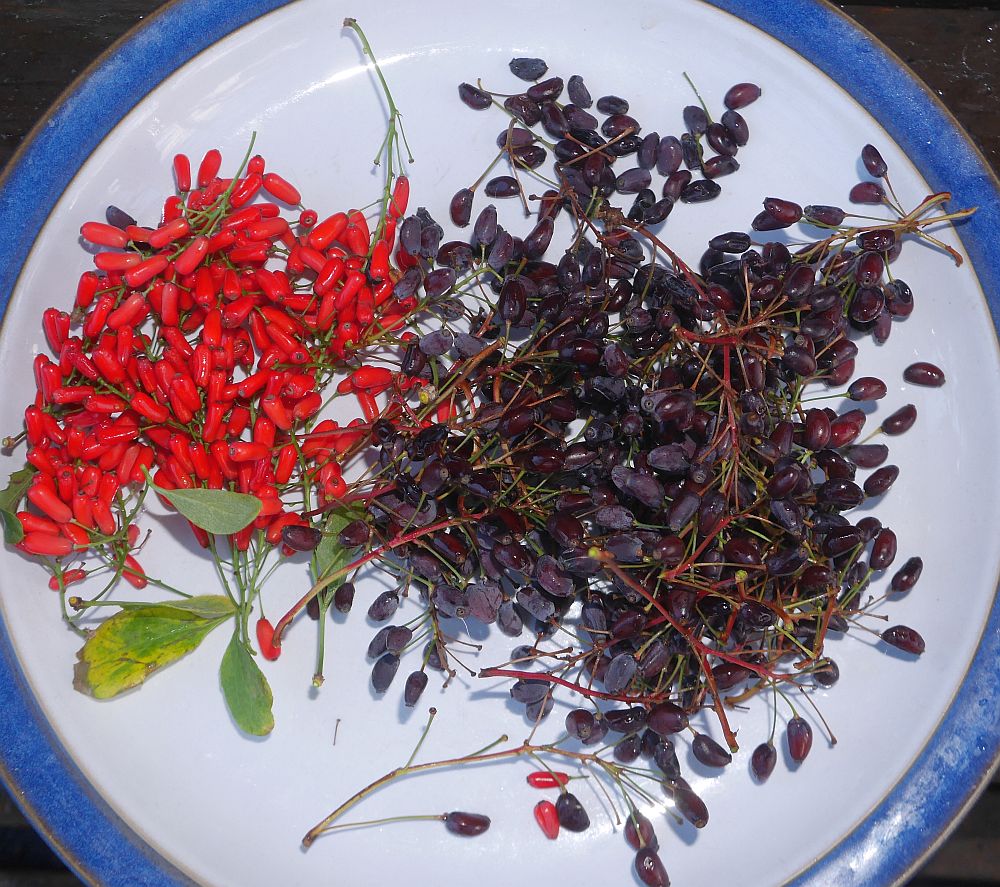
 Dried barberries
Dried barberries
I’ve been inspired by Persian cuisine many times over the years, like the Persian spice golpar from the seeds of Heracleum persicum and other Heracleum species, now the spice I use more than any other (see https://www.edimentals.com/blog/?s=golpar) and Persian shallots (see https://www.edimentals.com/blog/?s=persian+shallots).
I therefore decided to try using my dried Berberis harvest in various Iranian dishes. The first was just to give a “lemony zing” to rice. I ground the dried berries and just sprinkled on the rice before serving. 


There are numerous recipes for preparing zereshk polow which you can find easily by searching on the net (including youtube videos). It’s either a layered rice dish, but the rehydrated berries are usually sprinkled on the top as a jewel-like decoration. The berries are either rehydrated by soaking in cold water for 5-10 minutes or quickly in hot water. They are also added to melted butter which plumps them up. Saffron is often an ingredient (South Khorasan is also an important production area for saffron). The Iranian spice mix, which often contains golpar (ground seeds or the flower petals of Heracleum persicum). The pilow is usually steamed and often onions, garlic and almond slices are included. I’d like to adapting this using barley or rye grains in place of the rice.
Other Ethnobotanical Uses
I’ve also recorded other uses of Berberis vulgaris in the ethnobotanical literature in Europe and West Asia:
Czech Republic: Snack food for children
Estonia: Spice for fermented cucumbers
Slovakia: Young shoots eaten raw in spring or added to sauces
Bulgaria: Fruit added to soups as a sour taste
Turkey: Used fresh or dried
Basque Country (Spain): Young shoots are eaten
Other species
In 2011 on a visit to the Dublin botanical garden, I tasted my way through a nice collection of Berberis in fruit and two of them stood out with good taste:
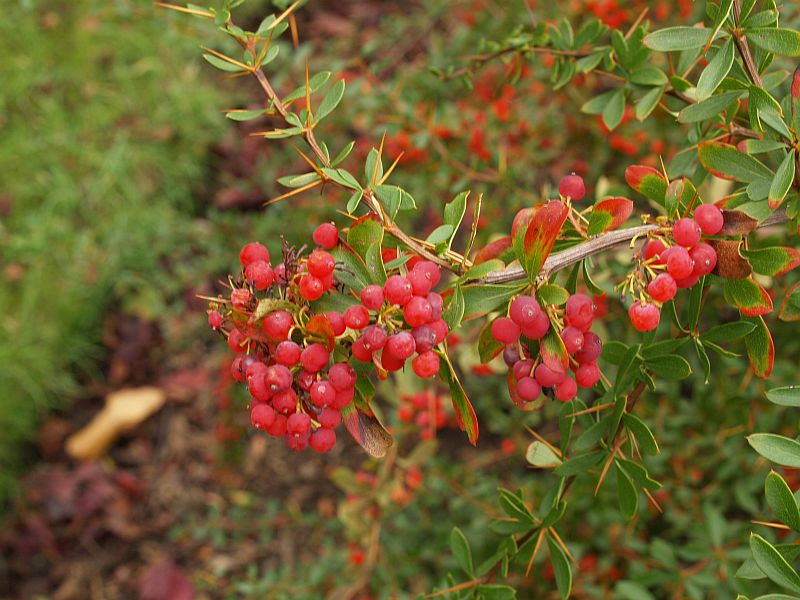
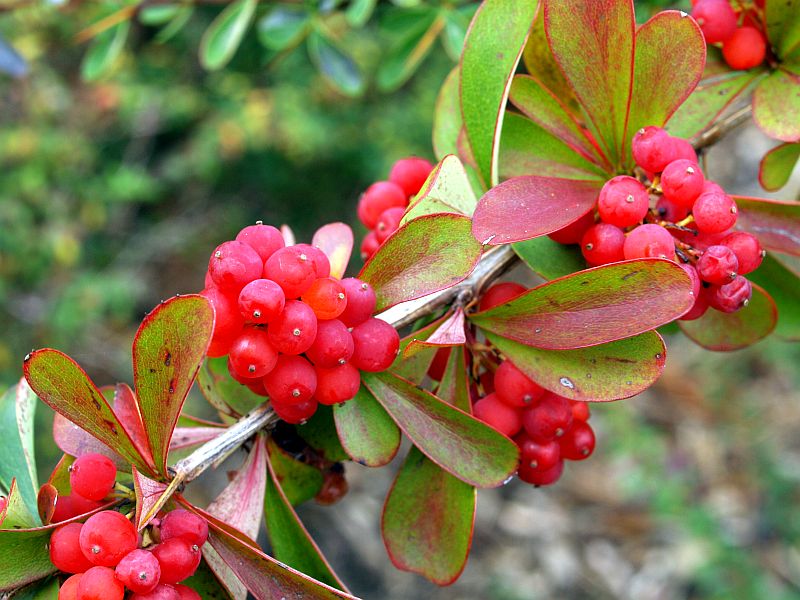
Nutritionally, Berberis fruits are rich in vitamin C (similar to citrus).
In some areas, it may be unadvisable to plant Berberis vulgaris as it is an alternative host for the stem rust Puccinia graminis of wheat and barley. However, modern day varieties are usually resistent.
March Waxwing
I’ve only twice before recorded waxwing (sidensvans) in March here. They arrive in large numbers in October and November and are usually gone again by the end of January. However, this year small numbers have stayed on. Nice then to be able to film this one in bright sunshine this morning. It had been eating from an apple I’d put out.
Yew for redwing
Norsk: Svarttrost, gråtrost, rødstrupe, munk, sidensvans og rødvingetrost!
210 Waxwings

Snow birds
Even waxwings (sidensvans) are attracted although they don’t stay for long.
Synchronised waxwings
I stopped the film and took the following screen grab and noticed that a couple of the birds were in gliding flight, looking like bullets:

I took another screen grab one second on and to my astonishment almost all the birds had synchronised into gliding flight:
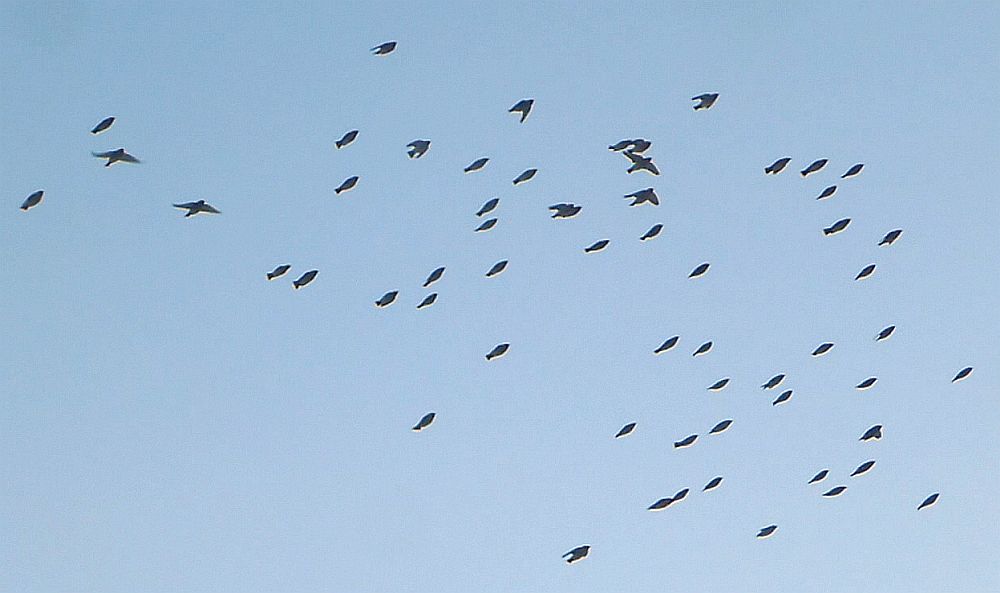
Apparently, this synchronisation of waxwing flocks is well known ( similar to starlings). Have a look in slow motion:
Waxwings on yew
Part of a flock of some 220 waxwings, here in a neighbour’s tree this morning!




